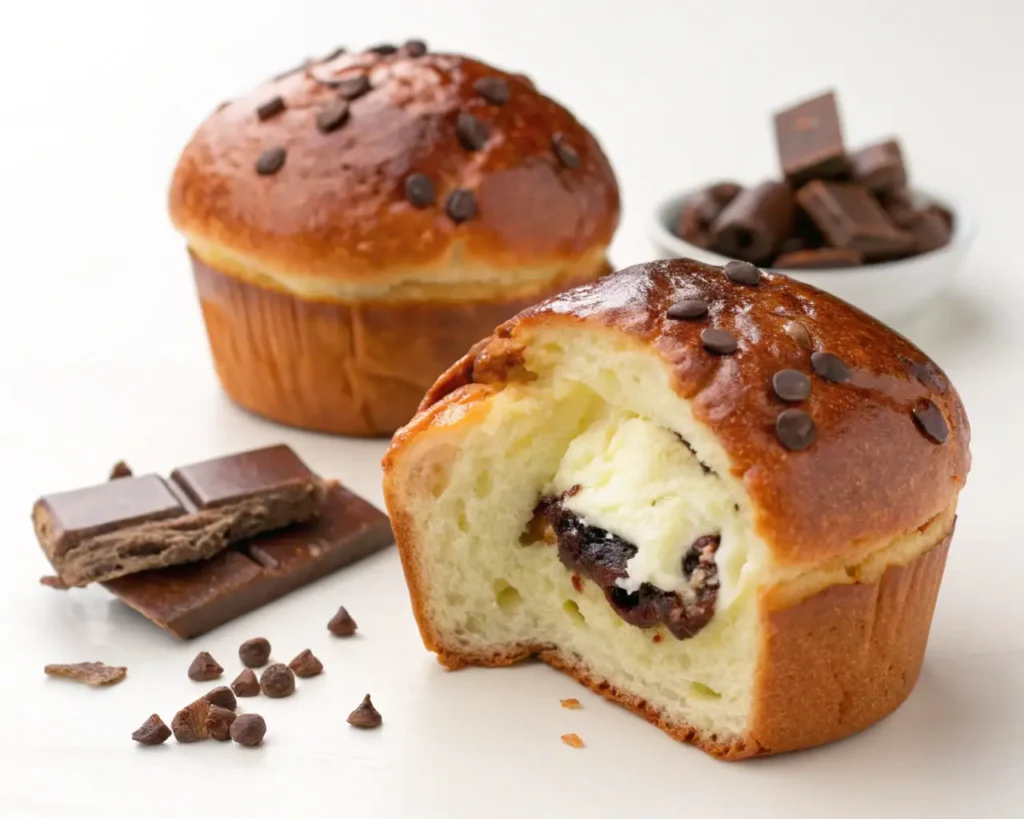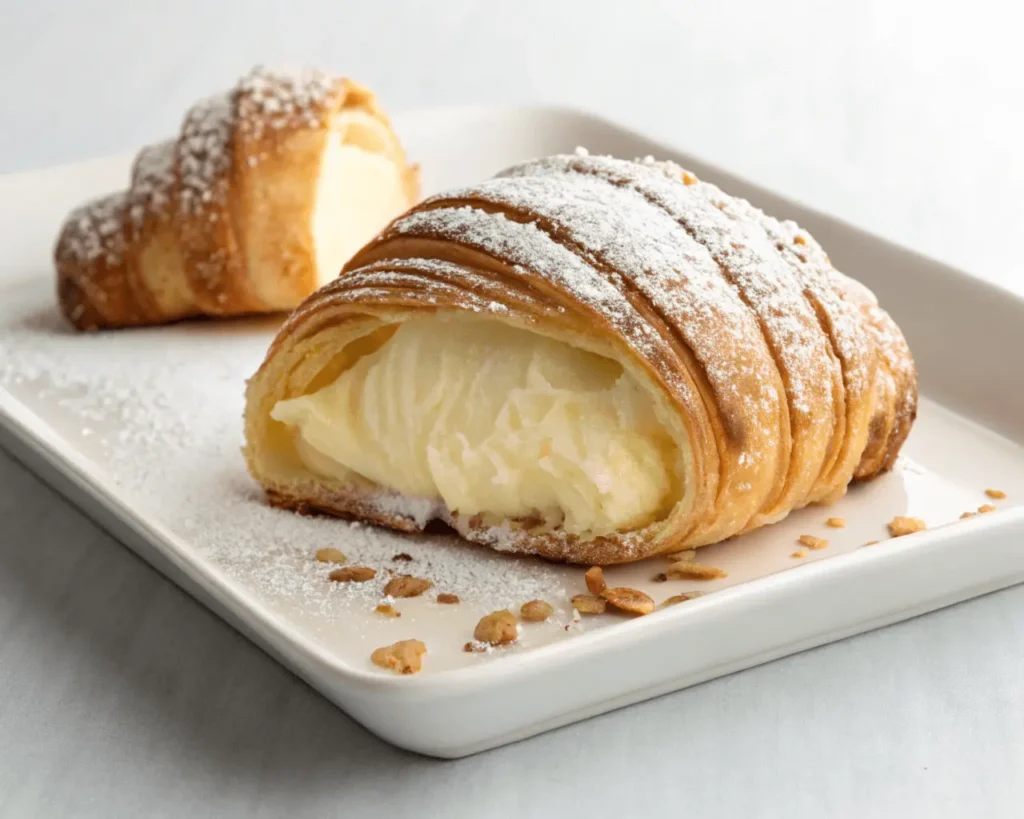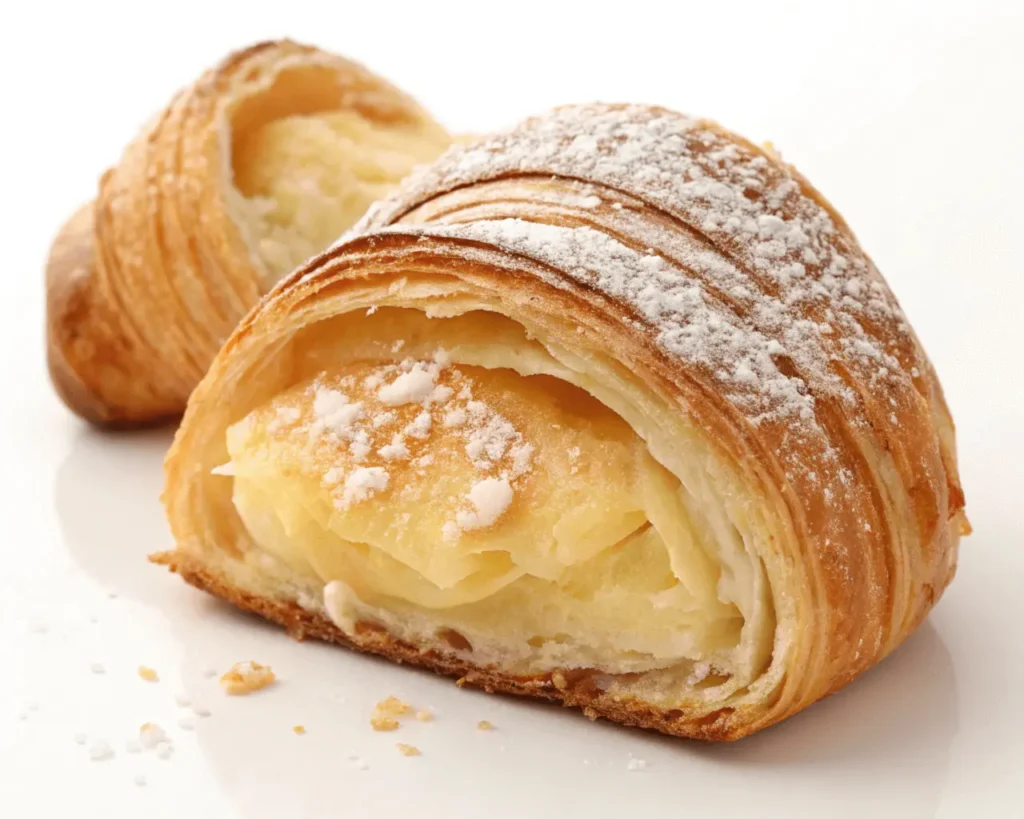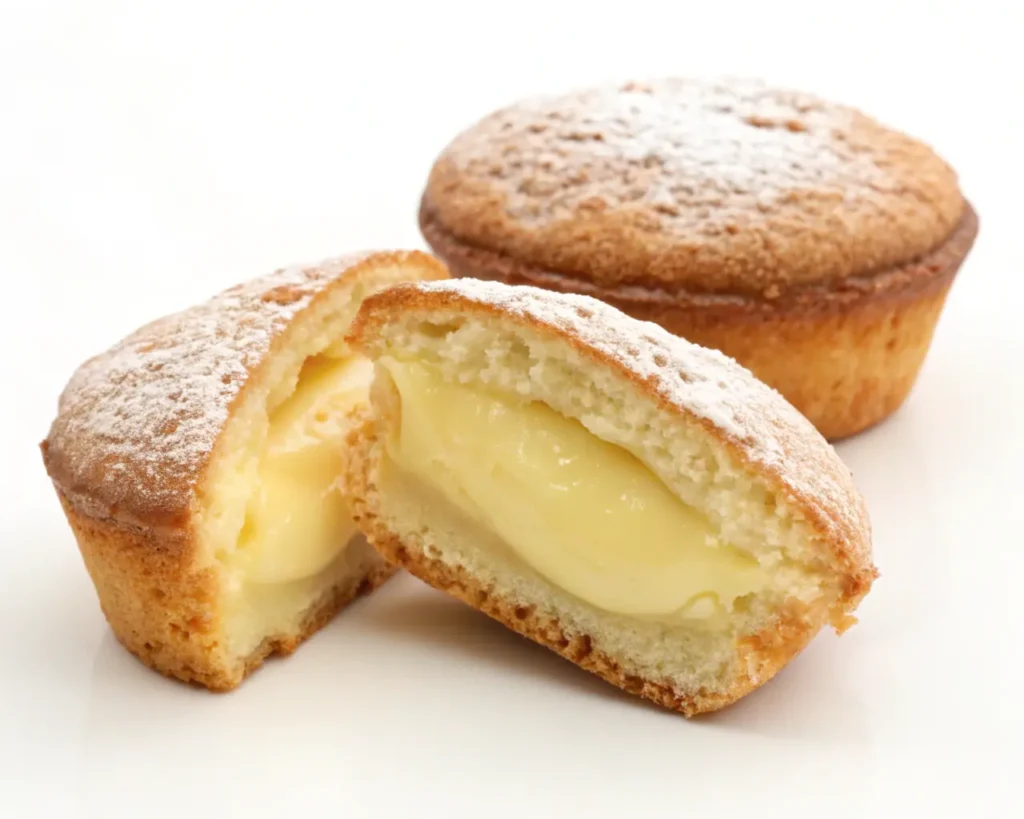When you think of Italy, images of sun-soaked piazzas, picturesque landscapes, and delicious pasta often come to mind. However, the morning meal is one of the most cherished aspects of Italian culture that travelers usually overlook. Italian breakfast foods are as simple as flavorful, with a rich history steeped in tradition. Unlike heavy, sprawling breakfasts found in other countries, Italians prefer a lighter start to their day—focused on quality, fresh ingredients, and coffee.
Breakfast in Italy isn’t just about filling your stomach; it’s about taking a moment to enjoy the start of the day. Whether it’s a quick espresso at the bar, a flaky pastry, or toast with jam, each food has its place in Italian breakfast rituals. From the bustling cafes of Rome to the serene countryside of Tuscany, the foods you find at an Italian breakfast are simple yet packed with flavor.
In this post, we’ll take you through 10 traditional Italian breakfast foods you absolutely must try—each one a delicious reflection of Italy’s unique food culture. So, whether you’re planning a trip to Italy or want to recreate a taste of Italian mornings at home, get ready to discover how Italians make breakfast an experience to savor.
Table of Contents
The Staples of Italian Breakfast: Bread and Spreads
When it comes to Italian breakfast foods, simplicity often reigns supreme. Unlike elaborate spreads, an Italian morning meal tends to focus on a few carefully chosen ingredients that make the start of the day both satisfying and delicious. Two staples that make up the backbone of an Italian breakfast are Fette biscotti and pane e marmellata—both simple yet incredibly flavorful.
Fette Biscottate: The Crispy Toast You’ll Love

One of Italy’s common breakfast choices is Iette biscotti is light, , whichcrispy slices of toasted bread. Think of them as the Italian version of crunchy toast with a satisfying bite and a slightly sweet flavor. These crisp slices are often enjoyed with a dollop of butter, honey, or jam, making them an easy yet tasty way to start the day.
But there’s one topping that Italians love above all—Nutella. That creamy, chocolate-hazelnut spread has become synonymous with Italian breakfasts, often slathered generously across fette biscotti for an indulgent treat. If you want to recreate this at home, don’t forget the Nutella—it’s almost a must!
- Toppings for Fette Biscottate:
- Jam (strawberry, apricot, or raspberry are favorites)
- Nutella
- Honey or marmalade
- Butter for a classic twist
Pane e Marmellata: Simplicity at Its Best
Another favorite in the Italian breakfast scene is pane e marmellata—just bread and marmalade. Simple, yet so comforting. This straightforward dish showcases Italy’s talent for making the simplest ingredients shine. Italians often choose a slice of hearty, fresh bread (sometimes lightly toasted) and spread a generous layer of marmalade or fruit jam. Whether it’s the sweet tang of apricot marmalade or the burst of citrus in lemon jam, this combination epitomizes uncomplicated goodness.
The beauty of pane e marmellata lies in its simplicity. It’s not about extravagant flavors or complicated preparation—it’s about enjoying a moment of quiet indulgence with quality ingredients. Paired with a cup of espresso or cappuccino, this meal perfectly balances energy and flavor to kickstart your day.
The Nutritional Simplicity of Italian Mornings
You might wonder—why keep it so simple? The answer lies in Italy’s approach to breakfast: it’s not about overindulgence but instead fueling the body with light, easily digestible foods. Classic staples like Fette biscotti and pane e marmellata balance carbohydrates, natural sugars, and healthy fats, making them a perfect morning pick-me-up.
Italians know that breakfast doesn’t have to be a heavy affair to be fulfilling. These foods allow you to feel nourished without feeling stuffed, leaving you ready to take on the day. Combining a quick espresso and a light, satisfying breakfast sets the tone for a relaxed and productive morning.
So next time you crave something simple yet tasty, why not try these Italian breakfast favorites? Whether you enjoy the crisp texture of fette biscotti with Nutella or savor the sweet comfort of pane e marmellata, you’ll surely experience the charm of Italian breakfast foods in every bite.
Italian Coffee Culture: A Breakfast Essential
No morning in Italy is complete without a cup of espresso—it’s the heartbeat of Italian breakfast culture. Coffee in Italy isn’t just a drink; it’s a ritual, a way of life, and an essential part of starting the day right. Whether strolling through the cobblestone streets of Rome or relaxing in a quiet café in Tuscany, the aroma of freshly brewed espresso fills the air, signaling the beginning of a new day.
Espresso: The Heart of Every Italian Breakfast
Espresso is the foundation of Italian coffee culture. It’s a small but powerful shot of coffee that packs a punch of bold flavor. But don’t mistake it for a quick fix; in Italy, espresso is more than just a caffeine boost—it’s a moment of enjoyment, a chance to pause and savor the richness of the beans. Italians typically drink their espresso at the bar, taking just a few seconds to enjoy it before continuing their day. This quick yet deeply satisfying coffee experience is a testament to how Italians blend efficiency with enjoyment.
You may wonder what makes espresso so unique. It’s the art of making it. Using finely ground coffee beans and high-pressure extraction, espresso is a perfectly concentrated shot that bursts with flavor. In Italy, espresso is more about quality than quantity, and a small cup delivers an intense experience that keeps you energized throughout the morning.
- Espresso variations:
- Ristretto: A shorter, more concentrated version of espresso.
- Lungo: A longer, milder espresso with more water.
- Macchiato: Espresso “stained” with a small amount of milk.
Cappuccino: The Perfect Pairing with Pastries
If espresso is the heart of Italian coffee culture, then cappuccino is the soul. While espresso can be consumed at any time, cappuccino is traditionally reserved for the morning. It is usually paired with a cornetto (the Italian version of a croissant) or another breakfast pastry. Italians believe milk-based coffee drinks like cappuccinos should be enjoyed before noon, as they believe milk can be too heavy later in the day.
The cappuccino is a balanced creation of espresso, steamed milk, and foam—light, frothy, and sweet enough. When sipped alongside a warm pastry, the combination is magical. The creamy foam of the cappuccino perfectly complements the crisp, buttery texture of pastries like cornetto, making it an unbeatable morning duo. In fact, for many Italians, a cappuccino and pastry combo is the ideal way to begin their day.
- Why Italians love cappuccino:
- It’s smooth, creamy, and comforting.
- It pairs perfectly with the simple, sweet flavors of breakfast pastries.
- It offers a moment of indulgence without feeling too heavy.
Differences Between Italian Coffee Habits and Other Cultures
Italian coffee culture is famously distinct, especially compared to how coffee is coffee in other parts of the world. In many countries, coffee is often a leisurely affair, accompanied by breakfast foods or enjoyed with friends throughout the day. But coffee is typically a much quicker, more concentrated experience in Italy. Italians drink their espresso standing up at the bar, often in under five minutes, while catching up on the latest news or chatting briefly with the barista.
Another difference is that Italian coffee does not contain flavored syrups or cream. In Italy, the focus is on the quality and richness of the coffee itself, not on sugary additives or extravagant flavors. A good espresso or cappuccino is rich, bold, and satisfying without extra flavorings.
Italian coffee culture also differs in how coffee is integrated into daily life. For Italians, coffee isn’t just about waking up; it’s about the entire experience. Whether it’s the morning ritual of sipping espresso at the local bar or the mid-morning break for a cappuccino and pastry, coffee is intertwined with socializing, relaxation, and enjoying the moment.
Why Italian Coffee is More Than Just a Beverage
In Italy, coffee is about more than just caffeine—it’s a moment of connection. It’s about slowing down for a second, even during a busy day, to appreciate a small, intense pleasure. A coffee break—espresso in the morning or a cappuccino with a pastry—is essential to Italian daily life, creating a sense of tradition and connection to the past.
So, next time you sip your espresso or cappuccino, remember you’re not just enjoying a drink; you’re partaking in a centuries-old tradition of Italian coffee culture. And if you haven’t tried it yet, indulge in the simplicity and elegance of an Italian coffee experience. Trust us, there’s no turning back once you’ve had an authentic Italian espresso.
Sweet Morning Treats: Pastries to Savor
No breakfast in Italy feels complete without a delicious pastry to pair with that perfect espresso or cappuccino. Italians take their morning pastries seriously, and each one offers a unique flavor and texture that complements their simple, elegant coffee culture. From the buttery layers of a cornetto to the crispy, flaky goodness of sfogliatella, these sweet treats are not just food—they’re part of the experience.
Cornetto: Italy’s Answer to the Croissant
When you walk into an Italian café, the first thing that catches your eye is the display of cornetti (plural of cornetto). Think of them as Italy’s version of the croissant—but with a few delightful twists. These golden, buttery pastries come in various forms, each offering a different filling or topping. The classic cornetto is often plain and lightly dusted with powdered sugar. Still, you can also find it stuffed with various fillings, from rich crema pasticcera (custard) to chocolate, apricot jam, or even hazelnut cream.
- Cornetto Variations:
- Plain with powdered sugar
- Cream-filled (custard, pastry cream, or whipped cream)
- Chocolate-filled or hazelnut spread
- Jam-filled (typically apricot or strawberry)
A cornetto pairs perfectly with your morning coffee, balancing flaky pastry and rich sweetness. Whether you enjoy one on the go or sit down to savor the moment, the cornetto is an essential breakfast in Italy.
Brioche: A Slightly Sweeter and Softer Pastry

If you’re looking for something softer and sweeter, brioche is the pastry you’ve been waiting for. While similar to the cornetto in shape, brioche is a slightly sweeter and denser pastry. It’s often enjoyed as a more indulgent treat in the morning. It’s soft buttery, perfect for dunking in your cappuccino or enjoying a smear of jam or honey.
Brioche takes on a new level of deliciousness in Sicily when paired with granita, a semi-frozen dessert made from fruit, coffee, or chocolate. But even without the granita, a plain brioche is a delightful way to start the day.
- Brioche Variations:
- Simple, lightly sweetened dough
- Filled with ricotta cheese, chocolate, or jam
- Perfect for pairing with a cappuccino
Whether you enjoy it at a café or make it at home, brioche offers a fluffy, satisfying, comforting, and prosperous start to your morning.
Sfogliatella: A Regional Specialty with Layers of Delight


Travel to Naples, and you’ll find a pastry that has become famous across Italy—sfogliatella. Known for its distinctive shape and crispy, flaky dough layers, sfogliatella is a true work of pastry art. This treat is filled with ricotta, semolina, candied citrus peel, and sometimes a hint of cinnamon. Its crunchy exterior gives way to a soft, flavorful, sweet, and tangy interior.
There are two main variations of sfogliatella: the sfogliatella riccia, which has thin, crispy layers that resemble leaves, and the sfogliatella frolla, which has a smoother, softer dough. Both versions are equally delicious and taste Naples in every bite.
- Sfogliatella Variations:
- Sfogliatella Riccia: Crispy, layered dough with a sweet ricotta filling
- Sfogliatella Frolla: A softer dough with the same sweet filling
Suppose you’re in the mood for something indulgent yet satisfying. In that case, the sfogliatella will transport you to the sunny streets of Naples, where this pastry has been a local favorite for centuries.
Pasticciotto: Custard-Filled Comfort from Southern Italy

Moving south to the region of Apulia, you’ll encounter another pastry that has won hearts across Italy—the pasticciotto. This custard-filled pastry has a soft, buttery dough and a creamy filling made from pastry cream. The contrast between the slightly crispy crust and the smooth, rich custard makes each bite an irresistible experience.
While pasticcio is most commonly found in southern Italy, particularly in Apulia and Lecce, it has become popular in many Italian cafés. It’s often served warm, and the custard inside is delightfully gooey, making it the perfect accompaniment to a morning coffee.
- Pasticciotto Characteristics:
- Buttery dough that’s slightly crispy
- Creamy pastry cream filling
- Typically served warm for a gooey, comforting experience
For those who love a sweet, creamy treat, pasticcio is a must-try. Whether you eat it in southern Italy or recreate the experience at home, this pastry will make your mornings feel special.
Italian pastries are more than just breakfast—they’re a part of the country’s rich cultural fabric. From the crispy layers of cornetto to the soft, sweet indulgence of brioche and the regional specialties like sfogliatella and pasticciotto, each pastry tells a story of tradition, craftsmanship, and indulgence. So next time you’re enjoying a cup of espresso, don’t forget to treat yourself to one of these delicious morning pastries—you’ll be savoring a true taste of Italy with every bite.
Regional Italian Breakfast Specialties
One of the most fascinating aspects of Italian breakfast foods is how they vary across the country. While the basics—like espresso, cornetto, and fette biscotti—are common, each region in Italy brings its flair to the morning table. From sweet cakes in central Italy to savory delights in the south, breakfast traditions are as diverse as the country. Let’s take a closer look at some of the regional Italian breakfast specialties that make the morning meal a truly unique experience in every corner of the country.
Breakfast Habits: Sweet vs. Savory
Italy’s breakfast culture is often shaped by local customs and ingredients, leading to distinct preferences for sweet or savory foods. In the north, for example, breakfasts tend to be lighter and often include sweet pastries or fruit. Meanwhile, southern regions may lean toward savory options, embracing flavors like cheese, olives, and cured meats.
But Italian breakfasts are unique in their ability to strike the perfect balance between simplicity and indulgence. Whether it’s a delicate cornetto filled with cream or a hearty, savory pastry, the Italian breakfast varies, but it’s always delicious and satisfying.
Ciambella in Central Italy – A Breakfast Cake Like No Other

If you find yourself in central Italy, particularly in Tuscany or Umbria, you’ll encounter a unique breakfast treat: ciambella. This ring-shaped cake is a beloved morning staple, often enjoyed with espresso. Light and fluffy, ciambella is made with simple ingredients like eggs, flour, sugar, and olive oil. It’s not overly sweet, making it the perfect accompaniment to a strong coffee.
In some regions, ciambella is flavored with citrus zest, aniseed, or even a hint of wine, adding complexity to its flavor. The cake’s texture is soft yet dense, satisfying without being heavy. It’s often enjoyed at home or in local cafés, sometimes paired with fresh fruit or a dollop of ricotta for extra richness.
- Ciambella Variations:
- Traditional ciambella with olive oil and citrus
- Flavored with wine or aniseed
- Sometimes served with ricotta or fresh fruit
This humble cake is delicious and a perfect example of how Italian breakfast foods vary from region to region. It’s a simple, everyday indulgence that sets the tone for a relaxed and enjoyable morning.
Unique Options: Tiramisù Pancakes in Modern Italian Breakfasts

As Italy embraces modern culinary trends, traditional breakfasts are evolving to include more contemporary twists. One example is the popular Tiramisù pancakes, a creative fusion of the classic Italian dessert and the beloved breakfast staple. This delicious take on breakfast combines layers of fluffy pancakes, rich mascarpone cream, and a dusting of cocoa powder reminiscent of the iconic tiramisù.
While not a traditional breakfast, Tiramisù pancakes are a modern favorite, especially in cafes that cater to a younger crowd or those looking for a more decadent start to their day. Imagine the creamy layers of mascarpone and the firm coffee-soaked sponge reimagined as soft pancakes served with espresso on the side. This fusion of Italy’s sweet flavors is perfect for those craving something different in their morning routine.
- Tiramisù Pancakes Features:
- Fluffy pancakes layered with mascarpone
- A dusting of cocoa powder and a hint of coffee
- A contemporary twist on the classic tiramisù dessert
These pancakes are just one example of how Italian breakfasts are evolving. With Italy’s passion for food, it’s no surprise that traditional recipes are continually reinvented with modern influences.
Italy’s regional breakfast specialties highlight the beauty of the country’s diverse food culture. Whether you’re indulging in a simple ciambella in central Italy or savoring the unique flavors of Tiramisù pancakes, each breakfast reflects the region’s rich history and local traditions. From sweet to savory, each bite tells the story of Italy’s culinary craftsmanship and love for the art of breakfast. So, next time you’re in Italy—or recreating the experience at home—explore these regional delights and savor a taste of Italian breakfast culture.
Healthy Italian Breakfast Options
While Italian breakfasts are often known for their indulgent pastries and rich coffee, there’s also a growing focus on healthy Italian breakfast options. As wellness trends evolve, more Italians choose lighter, nutritious options to start their day. Fresh fruits, whole grains, and even modern smoothie variations are making their way into Italian breakfast routines, proving that healthy doesn’t have to mean boring.
Yogurt e Frutta: A Refreshing, Nutritious Start


One of the healthiest breakfast options in Italy is yogurt e frutta (yogurt and fruit), which provides a perfect balance of protein, fiber, and vitamins. Italians are big fans of fresh fruit—such as seasonal berries, citrus, and stone fruits—paired with a generous serving of yogurt. Whether it’s tangy Greek yogurt or smooth, creamy natural yogurt, this combination offers a light, refreshing start to the day that’s both satisfying and nourishing.
Fresh fruit adds natural sweetness, while yogurt offers probiotics for digestive health and keeps you feeling full longer. Some Italians even sprinkle a little honey or granola on top to add a bit of crunch and extra flavor.
- Yogurt e Frutta Variations:
- Greek yogurt with honey and mixed berries
- Yogurt with sliced peaches, figs, or citrus
- Adding a handful of granola or nuts for texture
This combination is a fantastic way to fuel your day with vitamins, protein, and healthy fats—perfect for a quick, nutritious, balanced breakfast.
Whole-grain bread as an Alternative to Pastries


While pastries like cornetto and brioche are beloved Italian breakfast staples, there’s a shift towards whole-grain bread as a healthier alternative. Whole-grain bread is packed with fiber, which helps with digestion and keeps you feeling full longer. Many Italians opt for pane integrale (whole wheat bread) topped with olive oil, tomatoes, a sprinkle of salt, or perhaps a thin spread of ricotta and a drizzle of honey.
Whole-grain bread is more substantial and nutrient-dense than buttery croissants or sugar-filled pastries. It’s also a great source of complex carbohydrates, providing steady energy throughout the morning. Whether a slice of toast or a simple bread roll, whole-grain bread can easily replace the more indulgent pastries, offering a lighter yet equally satisfying choice.
- Whole-Grain Bread Toppings:
- Sliced tomatoes, olive oil, and salt
- Ricotta cheese with honey or jam
- Nut butter with sliced bananas
This approach is perfect for those seeking a healthier, more filling option that does not compromise on the essential Italian flavors.
Modern Trends: Smoothies and Health-Conscious Variations


As health trends continue to grow globally, many Italians embrace modern breakfast options like smoothies and other health-conscious variations. Packed with fruits, vegetables, and even superfoods like chia seeds or spirulina, smoothies offer an easy and delicious way to get your daily dose of vitamins and minerals. Italian-style smoothies often feature fresh seasonal fruit, a splash of juice, and even a dollop of yogurt or almond milk for extra creaminess.
In urban areas like Milan or Rome, smoothie bowls are becoming popular. These vibrant bowls are healthy and visually stunning, making them a perfect option for those who enjoy Instagram-worthy meals. They are often topped with granola, seeds, nuts, honey, or agave syrup.
- Smoothie Ideas:
- A mix of berries, spinach, and almond milk
- Banana, avocado, and a touch of honey
- Green smoothie with kale, cucumber, and lemon
For a modern twist, Italians also incorporate avocado toast into their breakfasts. They often top the creamy avocado with a sprinkle of seeds, olive oil, or even a poached egg. This fusion of healthy fats and whole grains is a trendy yet nutritious way to kick-start the day.
Incorporating healthy Italian breakfast options into your morning routine doesn’t mean sacrificing flavor or tradition. Whether it’s a refreshing bowl of yogurt e frutta, the simplicity of whole-grain bread, or the innovation of smoothies, there’s no shortage of nutritious options. These lighter, health-conscious choices provide a great way to enjoy a traditional Italian breakfast with a modern, healthy twist. So, why not try incorporating these options into your routine and savor the taste of Italy’s nutritious breakfast offerings?
How to Enjoy an Authentic Italian Breakfast at Home
Recreating an authentic Italian breakfast at home is easier than you might think, and it’s a delightful way to enjoy the flavors of Italy no matter where you are. Italian breakfasts are simple yet full of flavor, and they typically consist of a few carefully chosen ingredients that allow you to start your day with ease and joy. Here’s how you can bring the essence of an Italian breakfast to your kitchen.
Sourcing the Right Ingredients
The secret to a truly authentic Italian breakfast is fresh ingredients. Even if you can’t access an Italian café nearby, you can recreate that authentic feel with the right products.
- Espresso or Coffee: Italian coffee is a must for breakfast. Opt for a good-quality espresso or make a cappuccino for a more creamy option. If you don’t have an espresso machine, consider investing in a Moka pot—a staple in Italian homes—for that rich, full-bodied coffee.
- Pastries and Bread: Find fresh, authentic pastries like cornetto or pane integrale (whole grain bread). Many bakeries offer similar treats, or you can make your own if you’re up for a little baking adventure. For a quick alternative, look for artisanal bread at your local bakery.
- Fruits and Yogurt: For a lighter option, pair fresh, seasonal fruits with high-quality yogurt—Greek or Italian-style yogurt is ideal. Choose fruits in season to enjoy the freshest and most flavorful options.
- Jam and Nutella: A classic Italian touch—look for artisan jams made with local fruits, or treat yourself to some Nutella for that extra indulgence.
By using fresh, authentic ingredients, you’ll capture the essence of Italian breakfast and enjoy the true flavors that Italians love.
Simple Recipes to Recreate Italian Breakfast Classics
Now that you have the ingredients let’s dive into a couple of simple recipes to bring an authentic Italian breakfast to your home.
- Pane e Marmellata (Bread with Jam)
This quintessential Italian breakfast is quick, light, and delicious. Here’s how you can prepare it:

- Ingredients:
- Fresh whole-grain bread (pane integrale) or crusty Italian bread
- Your favorite jam or marmalade (apricot, strawberry, or citrus are common choices)
- A drizzle of honey (optional)
- Instructions:
- Toast a slice of fresh whole-grain bread to your desired crispiness.
- Spread a generous layer of jam over the toasted bread.
- Drizzle with a bit of honey for added sweetness, if desired.
This simple dish is perfect when paired with a shot of espresso or a creamy cappuccino.
- Cappuccino: The Italian Coffee Ritual
A cappuccino is the heart of an Italian breakfast; making it home can be fa un an experience. Here’s how:
- Ingredients:
- Fresh espresso coffee
- Milk (whole milk is preferred for a creamy texture)
- Optional: Cocoa powder or cinnamon for sprinkling on top
- Instructions:
- Brew a shot of espresso using your espresso machine or Moka pot.
- Steam your milk until it’s frothy. If you don’t have a steamer, heat the milk in a saucepan and froth it using a whisk.
- Pour the hot espresso into a cup, then add the steamed milk, creating a nice frothy layer.
- For an authentic touch, sprinkle a small amount of cocoa powder or cinnamon on top of the froth.
Pair this with your Pane e Marmella, anon anan Italian breakfast for a café.
Cultural Context: Why Italians Keep Breakfast Light
One reason Italian breakfasts are so light compared to those in other cultures is that they follow a philosophy of simplicity and balance. Italians tend to keep breakfast quick and light, reserving larger, more substantial meals like lunch and dinner later in the day. Breakfast is a way to gently ease into the day without overloading on calories or feeling too full.
- A Balanced Start: Italians believe that starting the day with a small, light meal helps to avoid the sluggishness that can come from a heavy breakfast. The focus is on a light but satisfying meal that leaves room for the bigger meals.
- A Cultural Tradition: In Italy, breakfast is often enjoyed at a bar, sipping espresso while catching up on the morning news or greeting friends. It’s quick and social, and the simplicity has a sense of ritual.
Italian breakfasts set a peaceful tone for the rest of the day by keeping it light and focused on quality.
Conclusion:
As we’ve explored throughout this post, the world of Italian breakfast foods is wonderfully diverse, offering a wide range of options that cater to all tastes and preferences. From the rich, comforting espresso to the delicate cornetto and the wholesome simplicity of pane e marmellata, there’s an Italian breakfast for every palate. Whether you prefer sweet or savory, light or indulgent, the beauty of Italian breakfasts lies in their ability to offer something both simple and satisfying.
What truly sets Italian breakfasts apart, however, is their cultural significance. Italians understand the value of starting the day calmly and unhurriedly. Their breakfasts are designed to be light and nourishing, fueling the body without overwhelming it. This emphasis on quality over quantity is a cornerstone of the Italian lifestyle, where meals are more than just nourishment—they’re a time to savor, relax, and appreciate the moment. In a world where breakfast can often become a rushed, unremarkable meal, the Italian approach reminds us of the joy of slowing down and enjoying our food.
Imagine how you could transform your mornings by incorporating some of these traditional Italian breakfast foods into your daily routine. Why not prepare a comforting cappuccino paired with a fresh, buttery cornetto, or opt for the refreshing simplicity of yogurt e frutta to kickstart your day? You don’t need to travel to Italy to experience the joy of an authentic Italian breakfast—you can recreate it right at home with just a few simple ingredients.
I encourage you to take this opportunity to try making one (or more!) of these delicious Italian breakfast dishes. Let the simplicity and flavor of these options inspire your mornings, and savor the experience of enjoying a slower, more intentional start to your day. Don’t forget to share your experience with friends, family, or even on social media. Whether you’re enjoying a pane e marmellata in your kitchen or sipping an espresso at sunrise, there’s something uniquely satisfying about sharing a piece of Italian culture.
So, what are you waiting for? Grab your espresso machine, pick up some fresh bread, and immerse yourself in the delightful world of Italian breakfast foods. Buon appetito!
FAQs
1. What is a typical Italian breakfast?
A typical Italian breakfast is light and straightforward. It usually consists of a coffee (such as espresso or cappuccino) paired with a pastry, such as a cornetto (Italian croissant) or fette biscotti (crispy toast with jam).
2. Why do Italians have light breakfasts?
Italians prefer light breakfasts, keeping it simple and making it easy to start the day. The focus is on quality over quantity, leaving room for more substantial meals later in the day, like lunch and dinner.
3. What is the difference between a cornetto and a croissant?
A cornetto is Italy’s version of the croissant but is generally sweeter and softer, often filled with cream, jam, or Nutella, whereas a croissant is typically flakier and less sweet.
4. What is ‘pane e marmellata’?
Pane e marmellata is a traditional Italian breakfast consisting of a slice of bread (often whole grain) topped with jam or marmalade. It’s a simple, healthy, and delicious breakfast option.
5. How do Italians drink coffee for breakfast?
Italians typically drink espresso or cappuccino for breakfast. Espresso is a small, strong coffee, while a cappuccino is made with equal parts espresso, steamed milk, and milk foam.
6. Can I make an authentic cappuccino at home?
You can easily make a cappuccino at home using an espresso machine or a Moka pot for the espresso base and steaming milk with a frother. It’s a fun and rewarding experience to create the perfect frothy cup.
7. What are some regional Italian breakfast specialties?
Breakfast habits can vary across Italy. For example, in Central Italy, you might find ciambella, a breakfast cake, while modern versions of Italian breakfasts may include Tiramisù pancakes for a creative twist.
8. Is there a healthier option for Italian breakfasts?
Italians are embracing healthier options like yogurt e frutta (yogurt and fresh fruit) or whole-grain bread with light toppings like ricotta and honey. Smoothies and smoothie bowls are also becoming popular as health-conscious breakfast choices.
9. What is sfogliatella?
Sfogliatella is a famous Italian pastry from Naples. It is known for its flaky, layered texture and is often filled with sweetened ricotta and candied fruit. It’s a deliciously indulgent breakfast treat.
10. Can I recreate an Italian breakfast at home?
Absolutely! You can recreate an authentic Italian breakfast by sourcing fresh coffee, pastries (like cornetto or fette biscotti), and yogurt e frutta. It’s simple to make and enjoy, and you’ll experience Italian culture at home.
Have you tried our Recipe ?
There are no reviews yet. Be the first one to write one.


3 thoughts on “10 Irresistible Italian Breakfast Foods You Must Try”
Comments are closed.